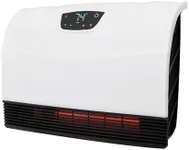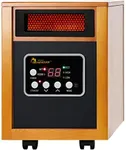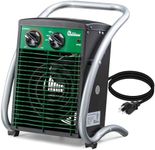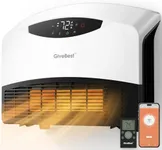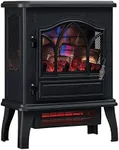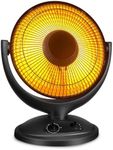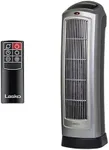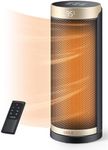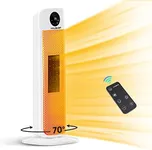Buying Guide for the Best plug in infrared heater
Choosing the right plug-in infrared heater can make a significant difference in your comfort and energy efficiency. Infrared heaters work by emitting infrared radiation that directly warms objects and people in a room, rather than heating the air. This makes them an efficient option for targeted heating. When selecting an infrared heater, it's important to consider several key specifications to ensure you get the best fit for your needs. Understanding these specs will help you make an informed decision and find a heater that provides the right balance of warmth, efficiency, and safety for your space.WattageWattage measures the power consumption of the heater and indicates how much heat it can produce. Higher wattage means more heat output. For small rooms or personal use, a heater with 400-600 watts may be sufficient. Medium-sized rooms might require 800-1200 watts, while larger spaces could need 1500 watts or more. Choose a wattage that matches the size of the area you want to heat. If you need to heat a larger space, opt for a higher wattage, but for smaller, more confined areas, a lower wattage will be more energy-efficient.
Heating AreaThe heating area specification tells you the maximum space the heater can effectively warm. This is usually measured in square feet. Small heaters might cover up to 150 square feet, medium ones around 300 square feet, and large heaters can cover 500 square feet or more. To pick the right one, measure the area of the room you intend to heat and choose a heater that can cover at least that much space. If you have a larger room, consider a heater with a higher heating area rating to ensure even warmth throughout.
Temperature ControlTemperature control allows you to set and maintain a desired temperature. This can be a simple dial or a digital thermostat. Basic models may have low, medium, and high settings, while more advanced ones offer precise temperature adjustments. If you prefer a specific temperature or want to maintain consistent warmth, look for a heater with a digital thermostat. For general use, a model with basic settings might suffice. Consider your comfort preferences and how much control you want over the temperature when making your choice.
Safety FeaturesSafety features are crucial for preventing accidents and ensuring safe operation. Common safety features include tip-over protection, which shuts off the heater if it falls over, and overheat protection, which turns off the heater if it gets too hot. Some models also have cool-touch exteriors to prevent burns. If you have children or pets, or if the heater will be used in a high-traffic area, prioritize models with robust safety features. These features provide peace of mind and help prevent potential hazards.
PortabilityPortability refers to how easy it is to move the heater from one place to another. This can be influenced by the heater's size, weight, and whether it has features like carrying handles or wheels. Smaller, lighter heaters are easier to move and can be ideal if you need to heat different rooms at different times. Larger heaters may be more powerful but less portable. Consider how and where you plan to use the heater. If you need flexibility, look for a model that is easy to transport.
Noise LevelNoise level is an important consideration, especially if you plan to use the heater in a bedroom, office, or other quiet space. Infrared heaters are generally quieter than other types of heaters, but some models may still produce a noticeable hum or fan noise. Noise levels are usually measured in decibels (dB). For a quiet environment, look for heaters with lower dB ratings. If noise is not a major concern, this spec may be less critical. Think about where you will use the heater and how much noise you can tolerate.
Energy EfficiencyEnergy efficiency indicates how effectively the heater converts electricity into heat. More efficient heaters use less energy to produce the same amount of heat, which can save you money on your energy bills. Look for heaters with energy-saving features like programmable timers, eco modes, or energy star ratings. If you plan to use the heater frequently or for long periods, choosing an energy-efficient model can be beneficial. Consider your usage patterns and prioritize energy efficiency to reduce operating costs.
